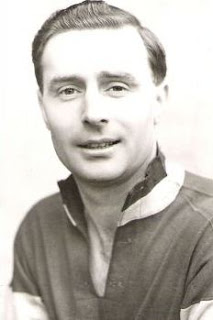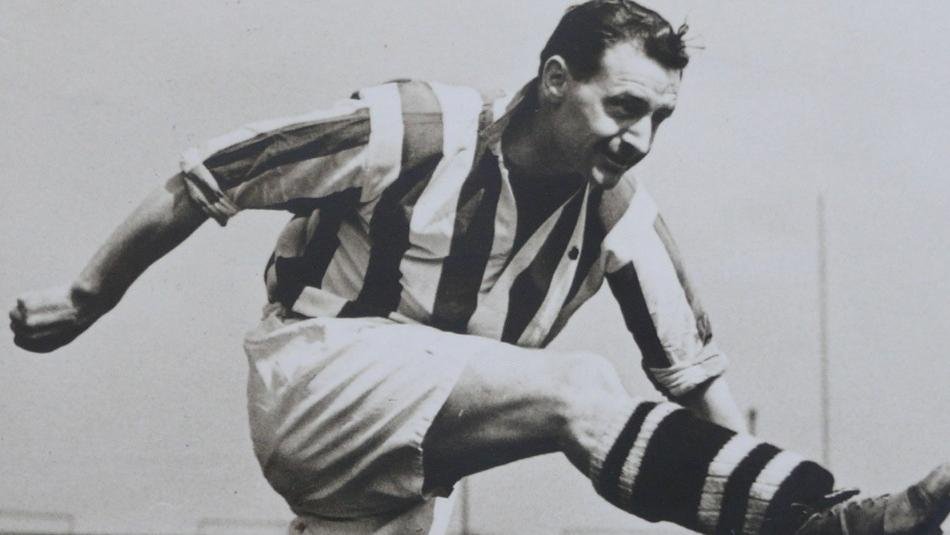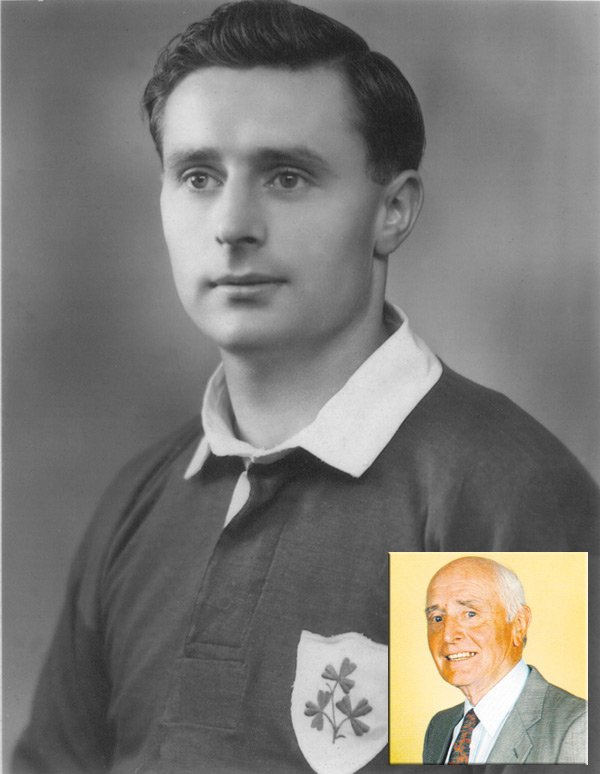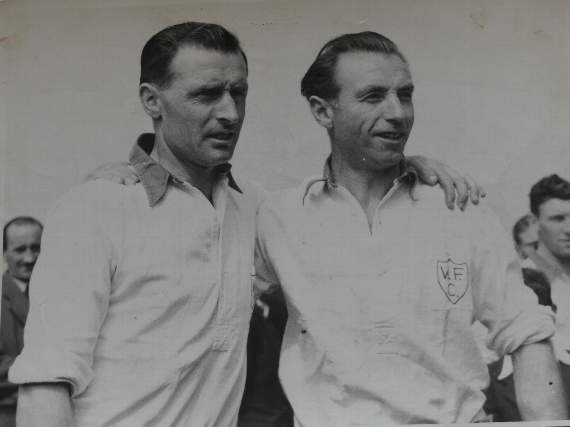

David Joseph Walsh was born in Waterford on the 28th April 1923. While in the south-east he attended Mount Sion and was considered a fine goalkeeper in hurling when the school reached the Harty Cup final against Thurles CBS in 1939. Yet his exploits in the Junior League in which he scored eight goals in his first game would lead him to pursue soccer over Gaelic Games. However, Walsh’s next door neighbour on Barrack Street would become an icon of Waterford hurling, one John Keane.
Walsh’s professional career in soccer began with Limerick United (and a brief spell with Shelbourne of Dublin) before a move to Irish League club Linfield propelled him to the attention of English clubs. A prolific three years, including a 73-goal haul for the 1945/46 season paved the way for a move to the Midlands with West Bromwich Albion. Walsh left Linfield with two Irish Cup winners medals for 1945 and ’46. In the latter final he contributed two goals in the three-nil victory over Distillery. The reason for Walsh’s goal-scoring prowess not being fully acknowledged is due to the suspension of the Irish League during the Second World War and the creation of a Northern Regional League which he won twice.
Linfield are not only the most successful club in the history of club soccer in Northern Ireland but are considered a Protestant club. The club still holds great affection for Walsh, who was voted as one of their top 25 footballers of all-time. He was one of the few Catholics to have played for the Blues in the 20th century and one of the first from outside Belfast. Reminiscing on his time in Belfast, Walsh stated ‘…that was the happiest period of my career…I was made totally welcome, part of the family and never experienced problems on any issue.’
His transfer fee of £3500 to the Albion made Walsh the English club’s first signing after the Second World War. It was more than repaid with one hundred goals in 174 games. Walsh also holds the distinction of scoring consecutively in his first six games. A dream start, was disrupted with the occurrence of a persistent nose bleed as a result of what appears to be chemicals in the atmosphere of West Bromwich. This abated when he moved to Droitwitch.

While at the Hawthorns he was a part of side that finished runner-up in Division Two of the Football League in 1949. As the second place team, Albion finally achieved promotion to the First Division only to miss out on top spot. Celebrations surrounding their guaranteed rise to the elite of the English game occurred before the final match of the season. In total he scored twenty-three goals that campaign.
Five years later, Walsh joined Albion’s Birmingham rivals Aston Villa and achieved a respectable forty goals in 114 matches. Aside from this, his legacy with West Brom was his integral role in laying the foundations for that club’s ‘Team of the Century’ for the 1953/54 season. The investment for that side was the result of the £25,000 received from Villa for Walsh’s services. That Albion side of the early fifties came close to becoming the first team to win both the league and FA Cup double in the twentieth century, defeating Preston in Wembley but finishing runners-up to rivals Wolves in the league. While the early sixties saw Villa have another Waterford man number their club with Alfie Hale.

Walsh received international caps with both the IFA and FAI during the 1940s and ‘50s. The most notable match which he was a part of was the Republic of Ireland’s victory over England at Goodison Park in 1949, becoming the first foreign team to defeat the Three Lions on home soil. In all, he received nine caps for Northern Ireland plus two ‘Victory’ caps scoring seven goals altogether. For the FAI he represented Eire/Republic of Ireland twenty times scoring on five occasions.
Perhaps his biggest contribution in an Ireland jersey was scoring twice in a three-two victory over Spain in March 1947. The occurrence of a player representing more than one international team was common prior to 1950 (and particularly in Ireland with the soccer-split which paralleled the creation of the partition of the island in 1920) and dissipated after a FIFA ruling due in part to players like Walsh playing for both the IFA and FAI in the 1950 World Cup qualifying campaign.
Even in retirement, Walsh continued to receive attention from his hometown club when in 1957 he was rumoured to play for Waterford or even a Munster club in the FAI Cup. Though having experienced the junior league in Waterford, he never played in the League of Ireland for his local team
Walsh passed away on 14th March 2016.

The pantheon of Waterford soccer players is rich stemming from figures such as Paddy Coad, Peter Fitzgerald to Alfie Hale and Jim Beglin. In recent years John O’Shea and Daryl Murphy owe a great deal to the path paved by Walsh. Often in sport we fixate on the present and future to the detriment of acknowledging the past, and the roles and achievements of such pioneers. Hopefully one day we’ll see a Blue Plaque to Walsh next door to that which already marks John Keane’s home on Barrack Street.


